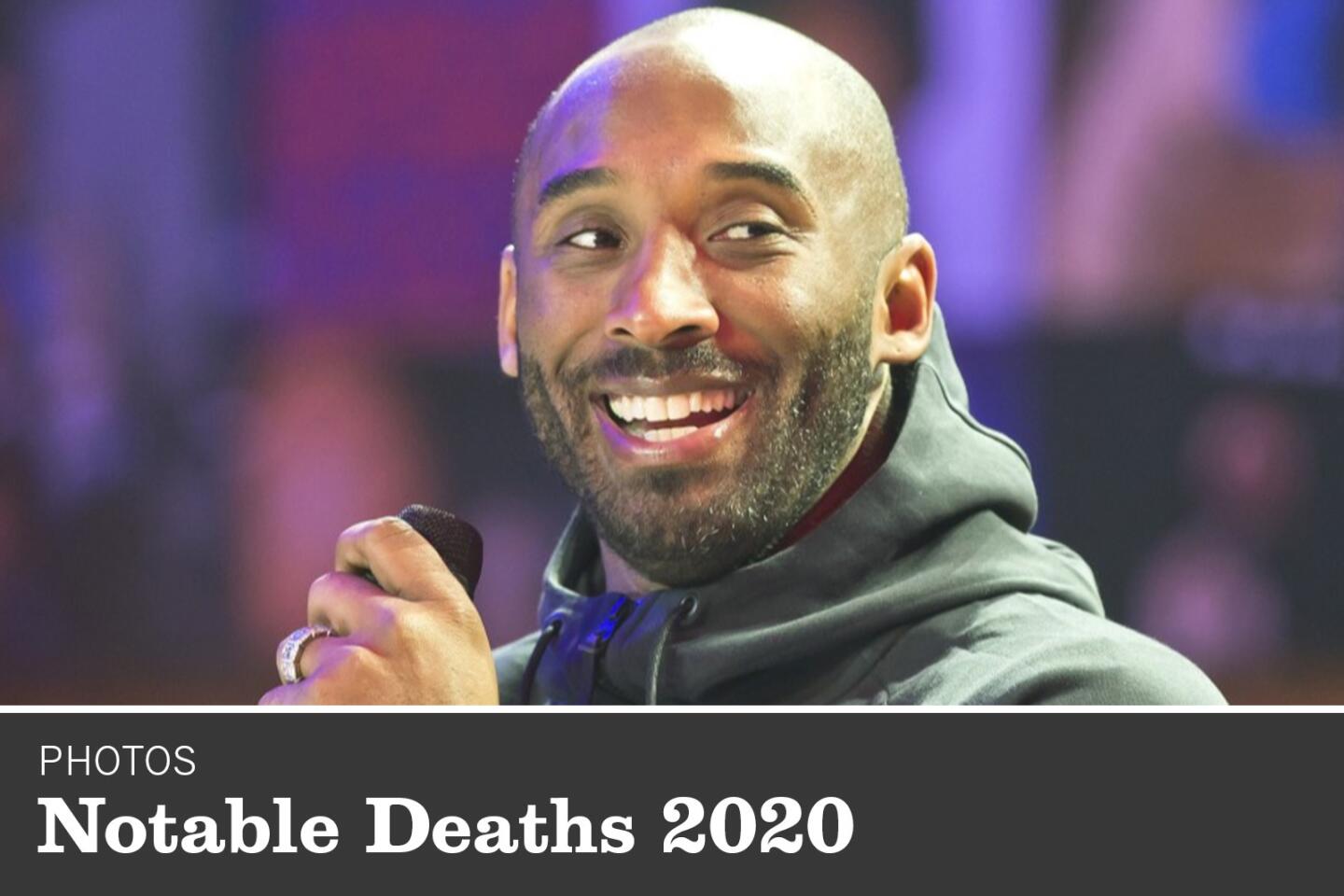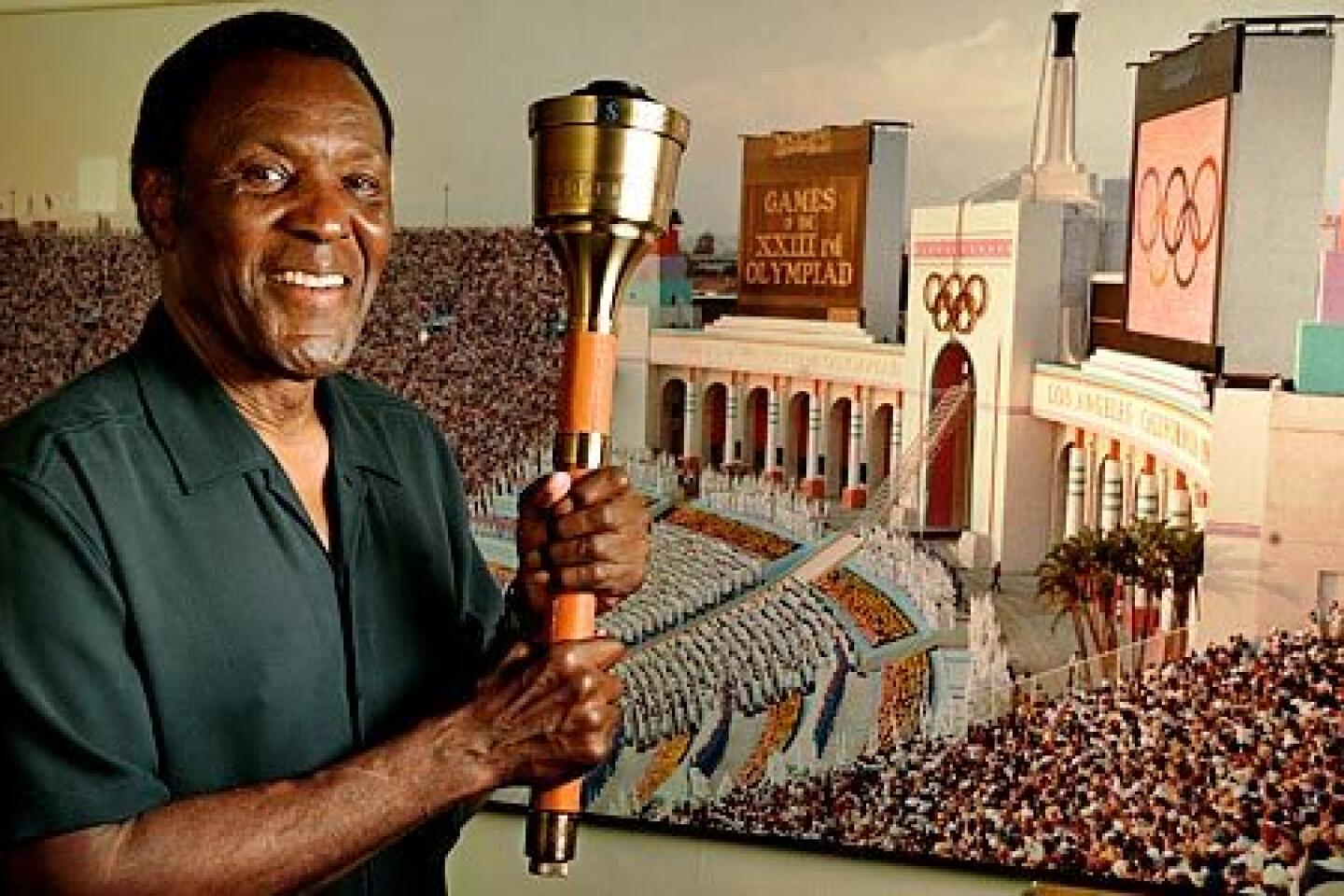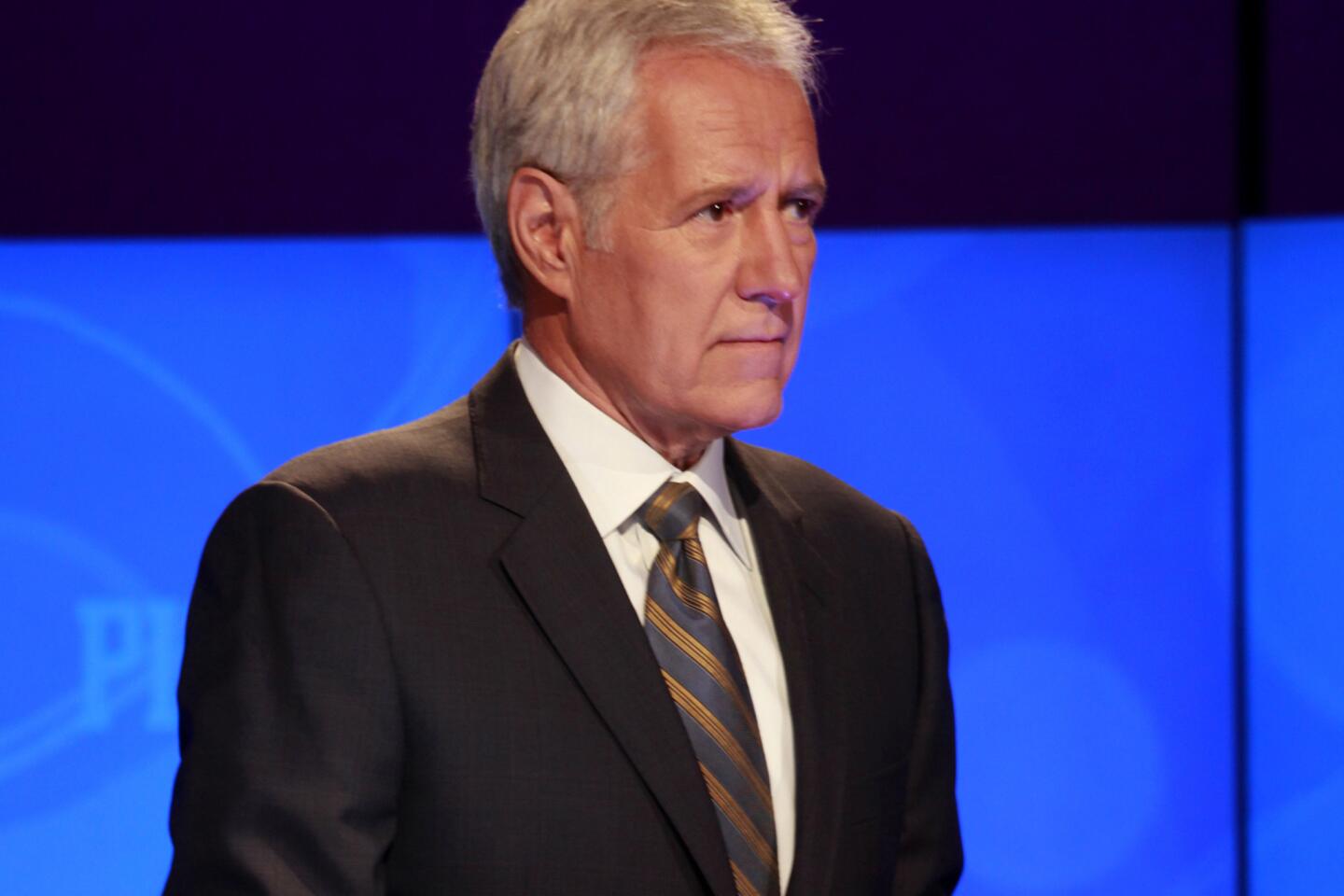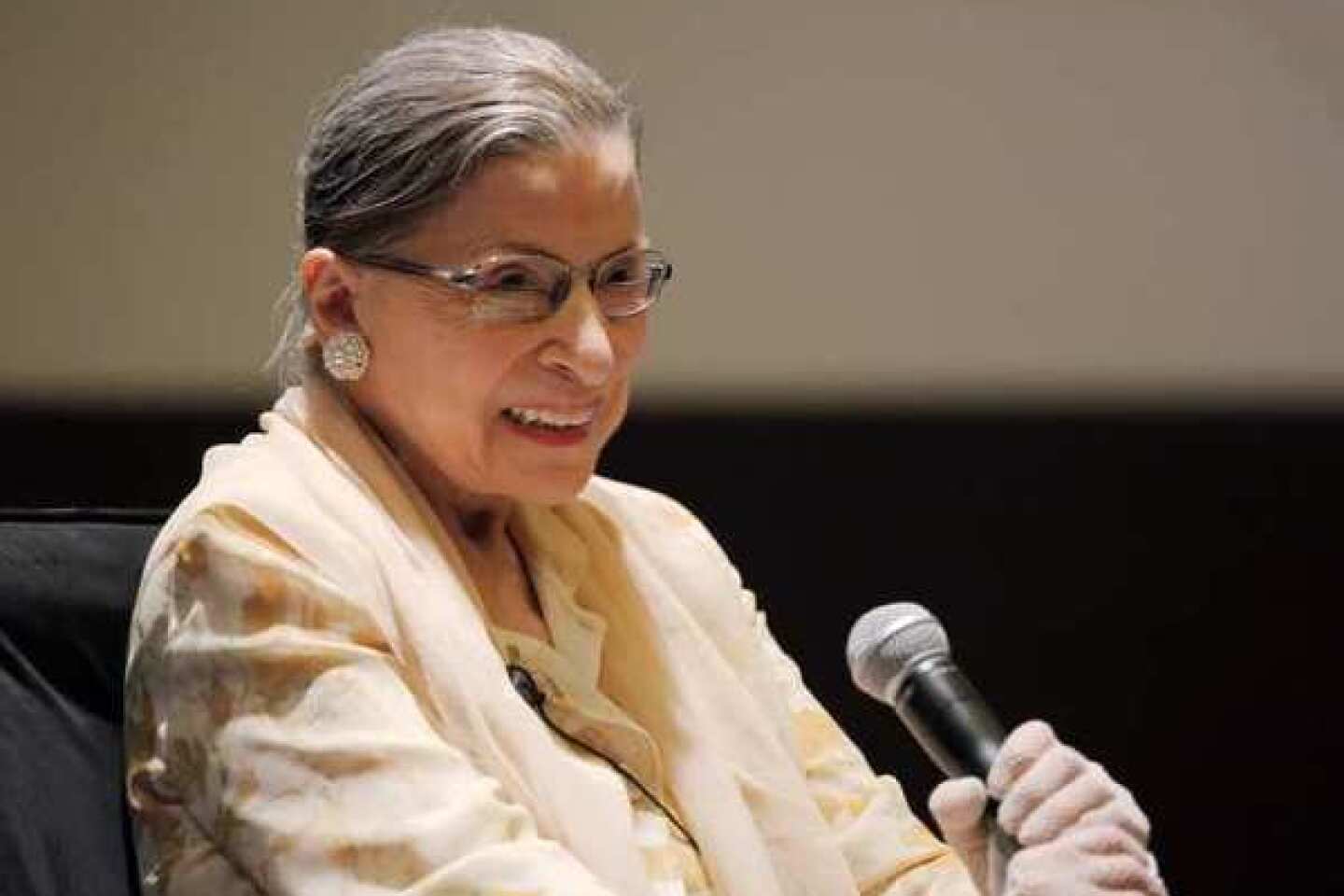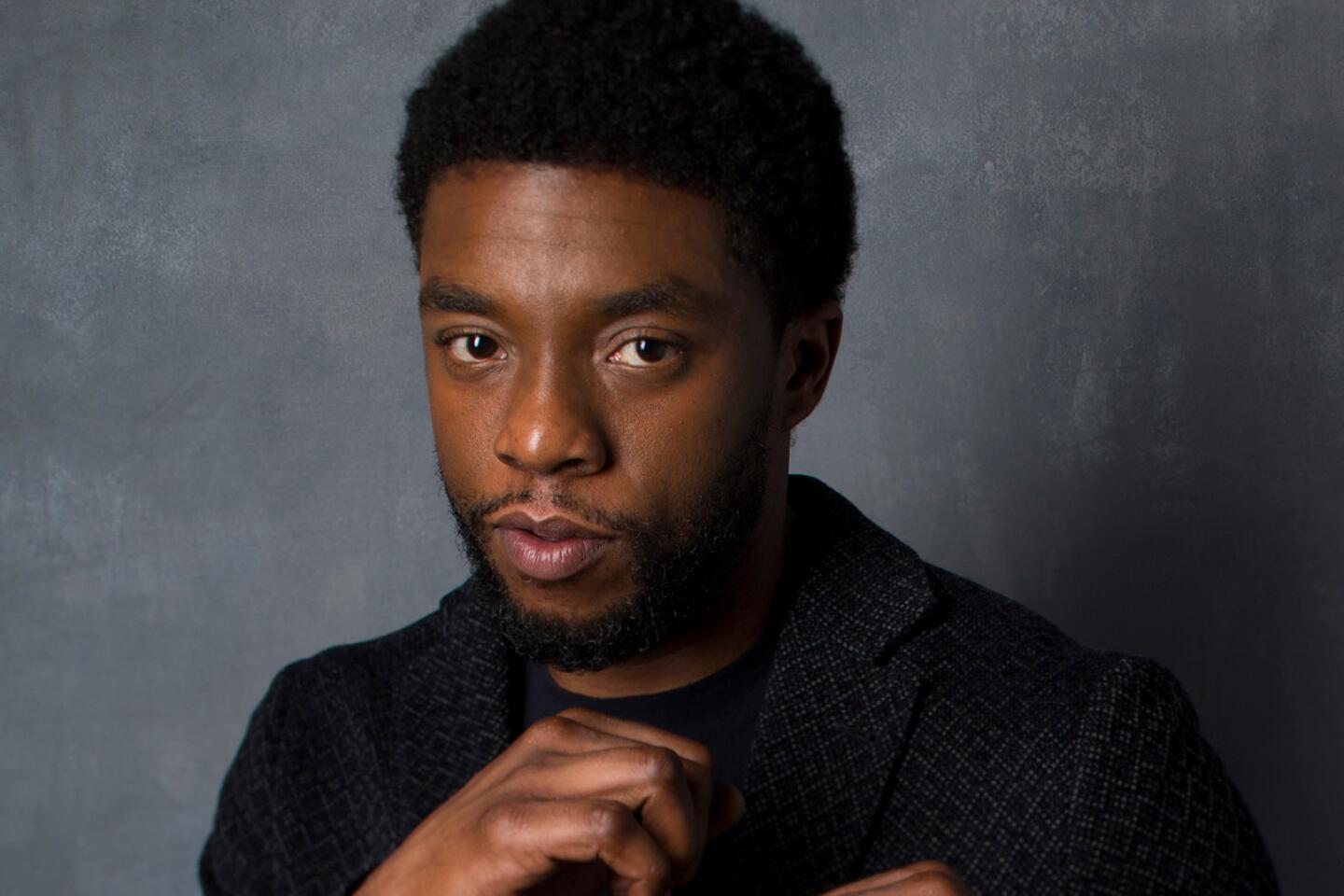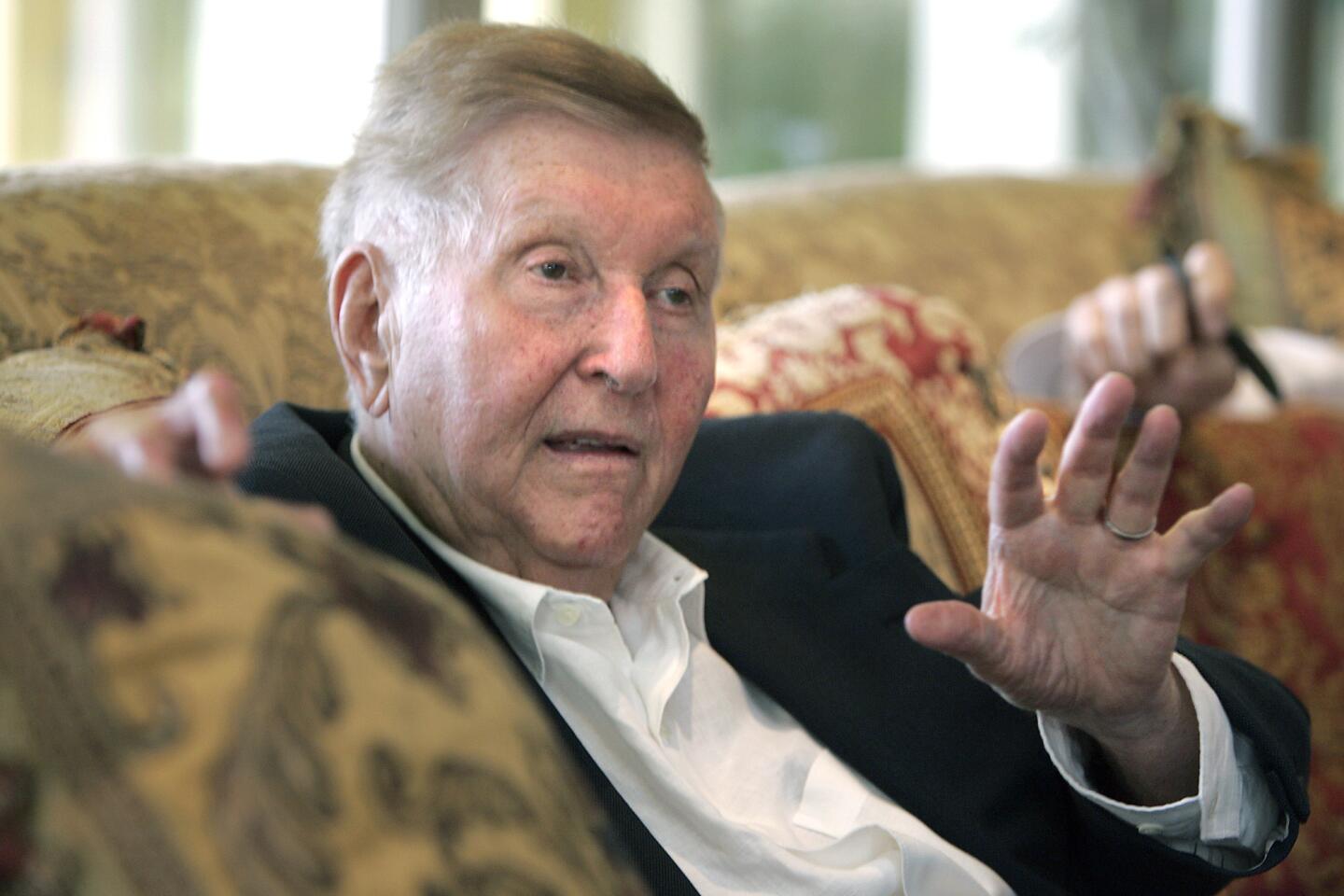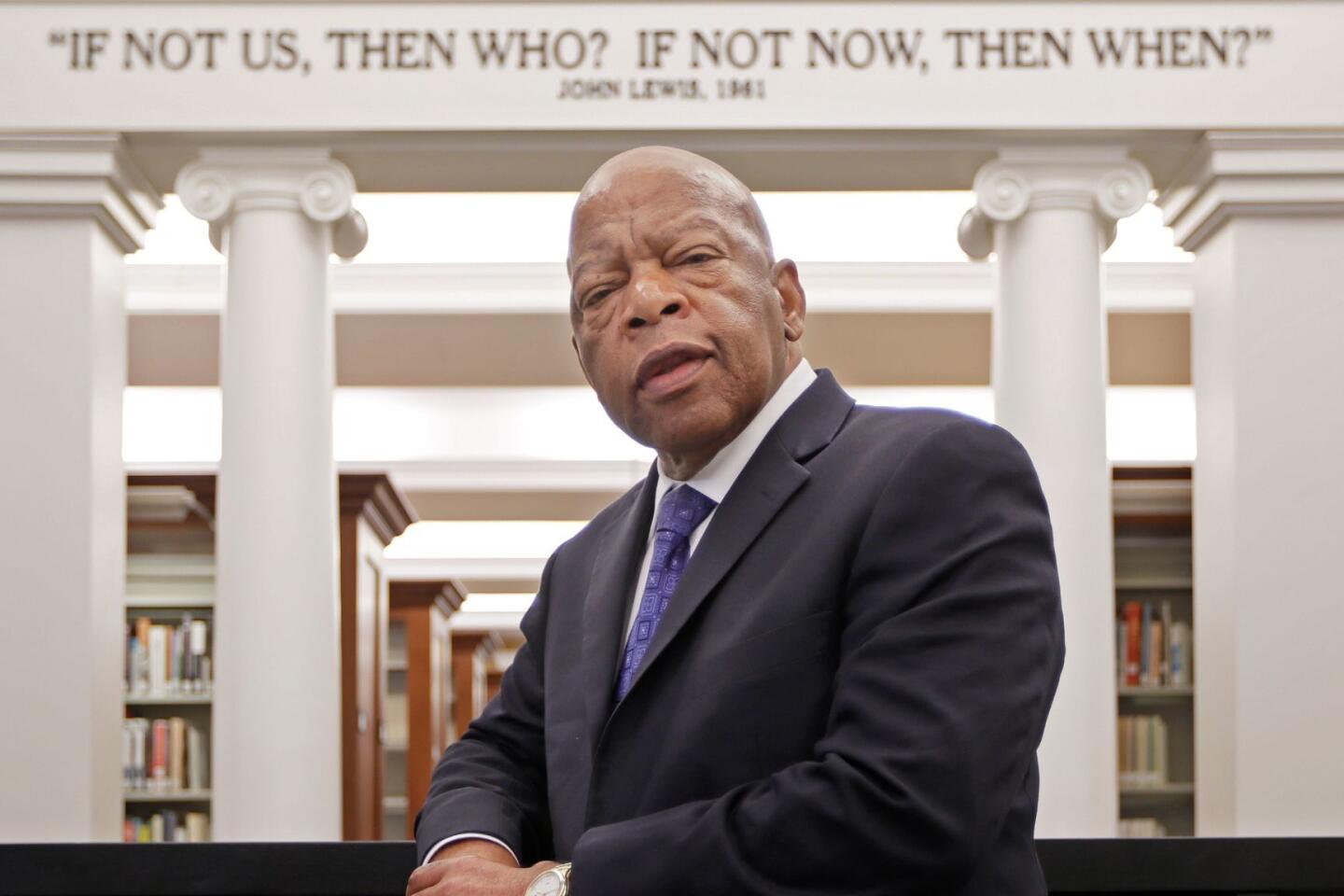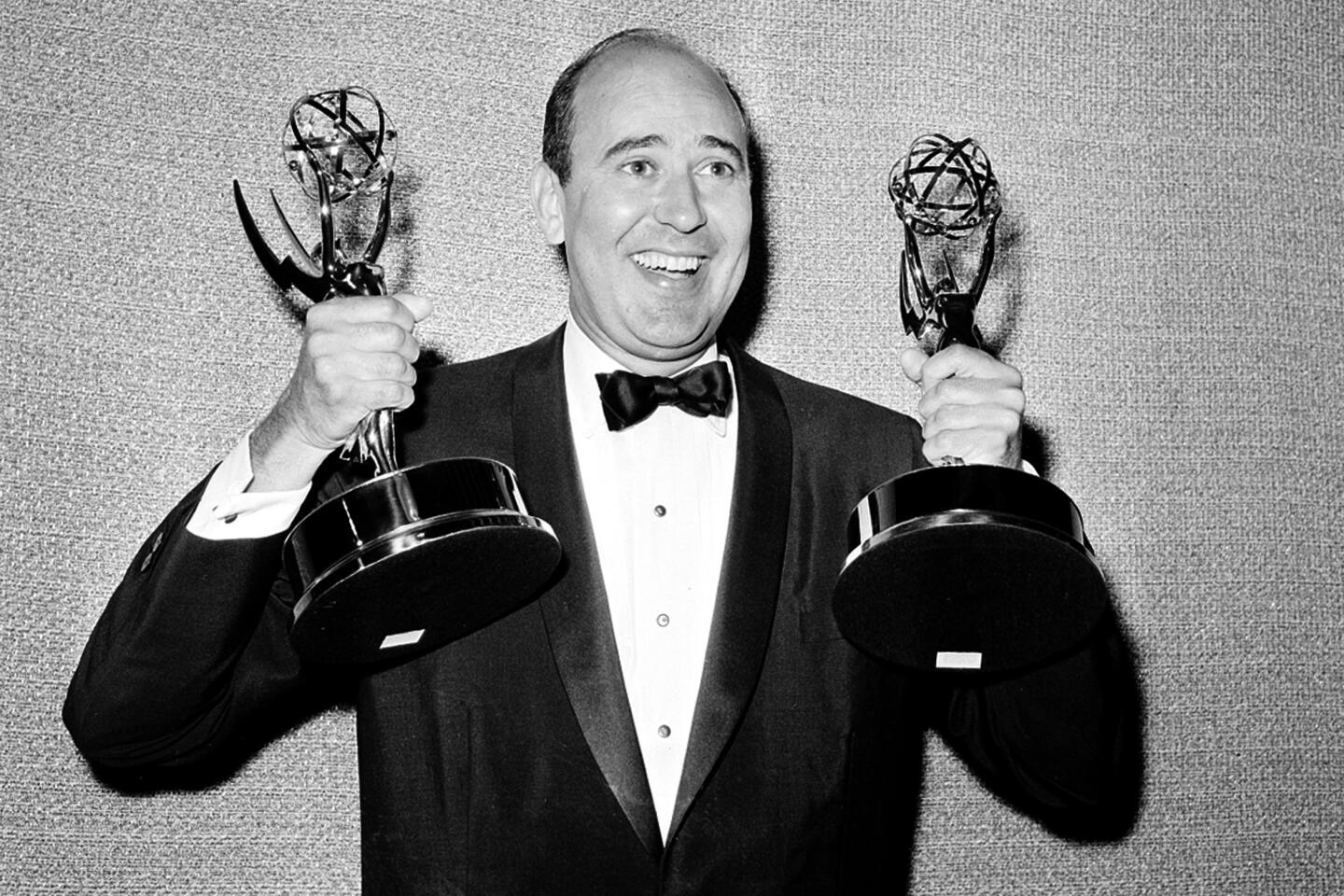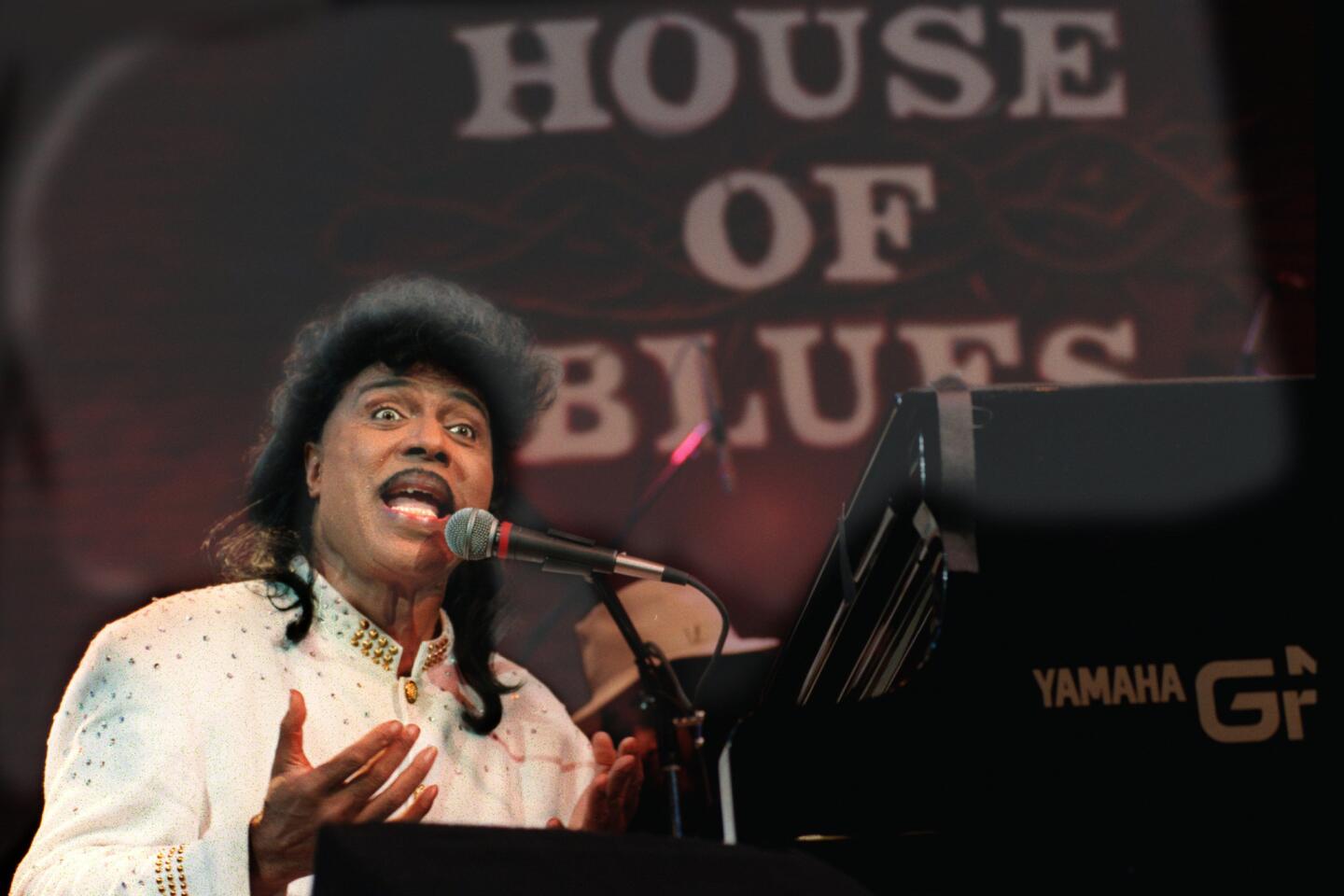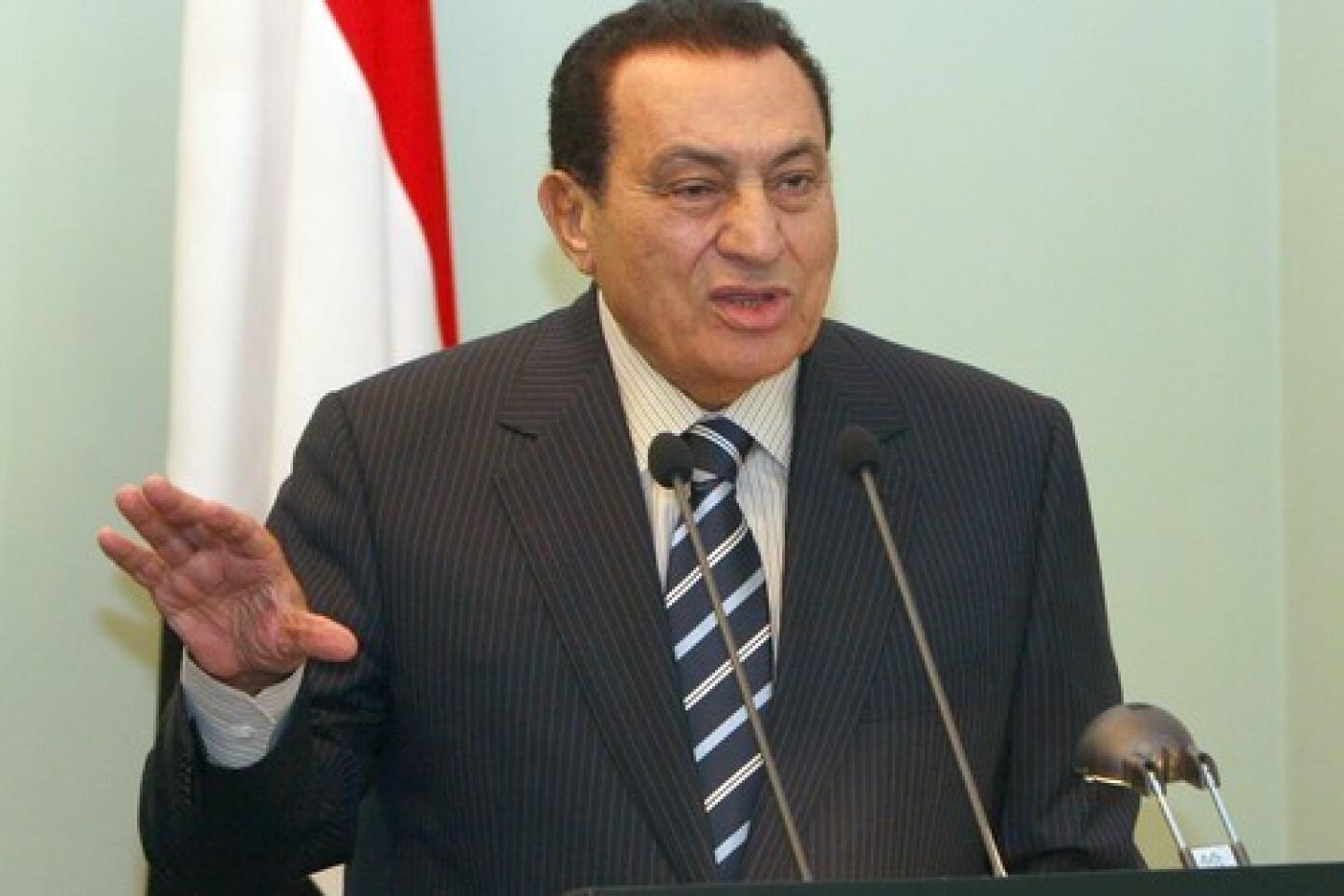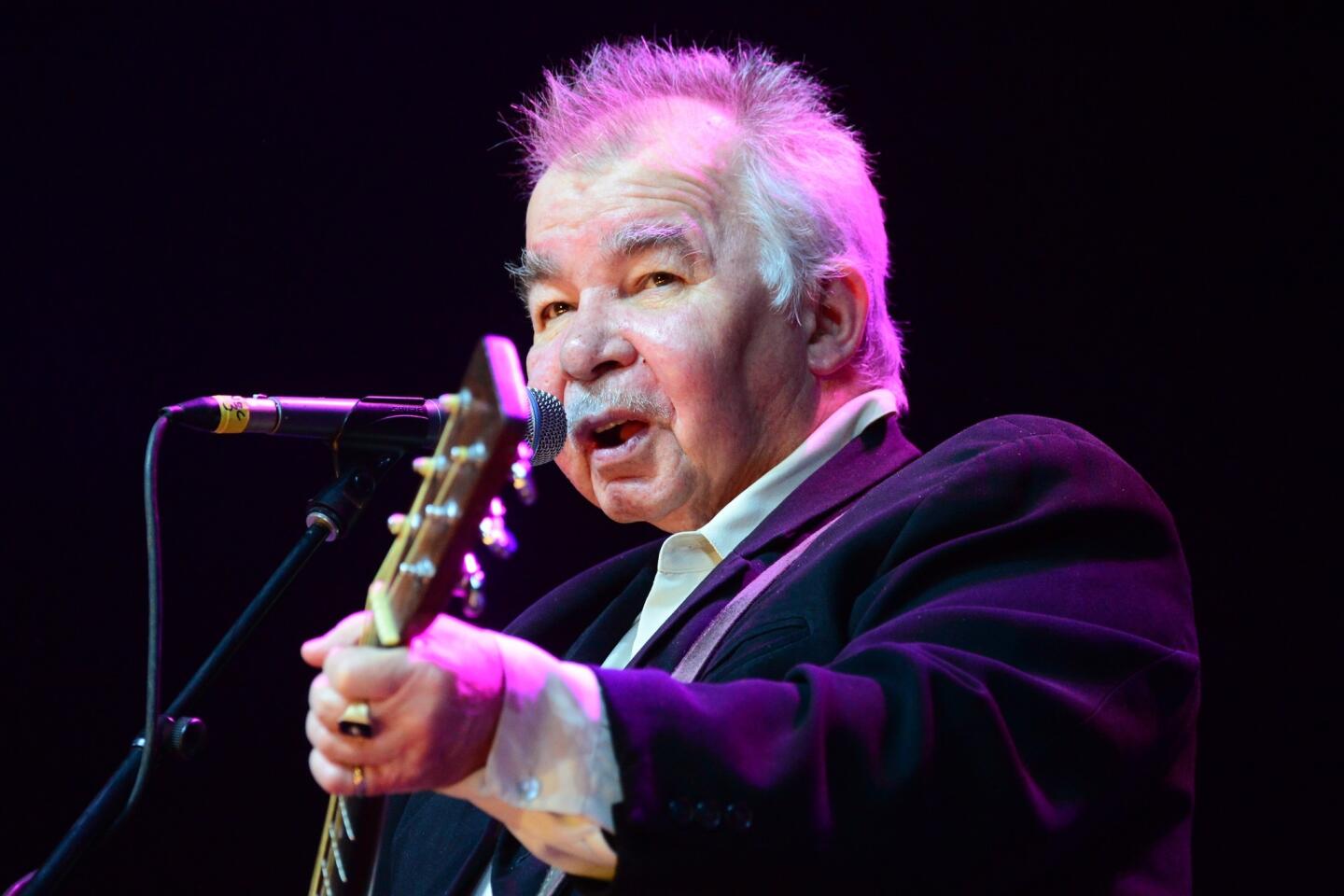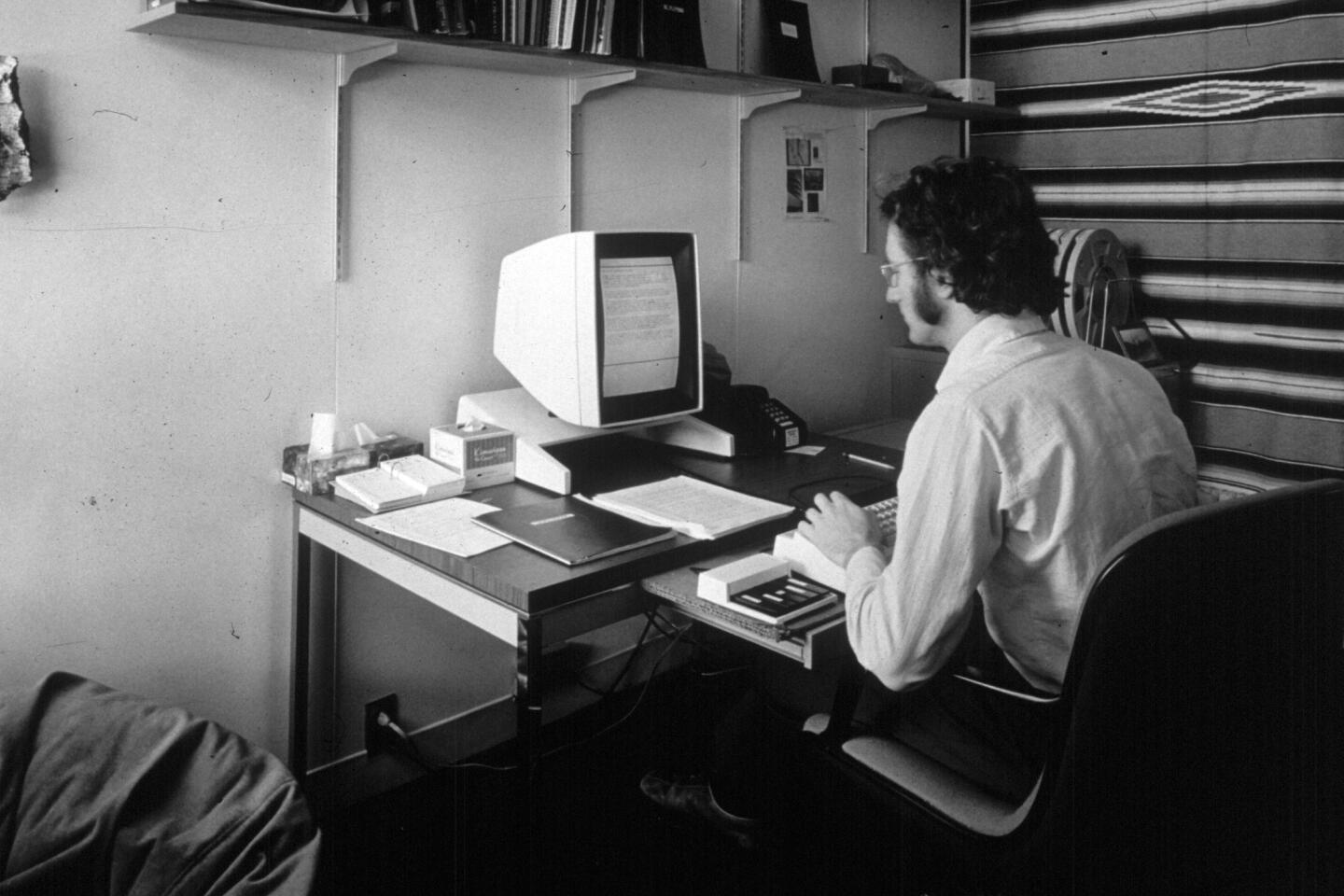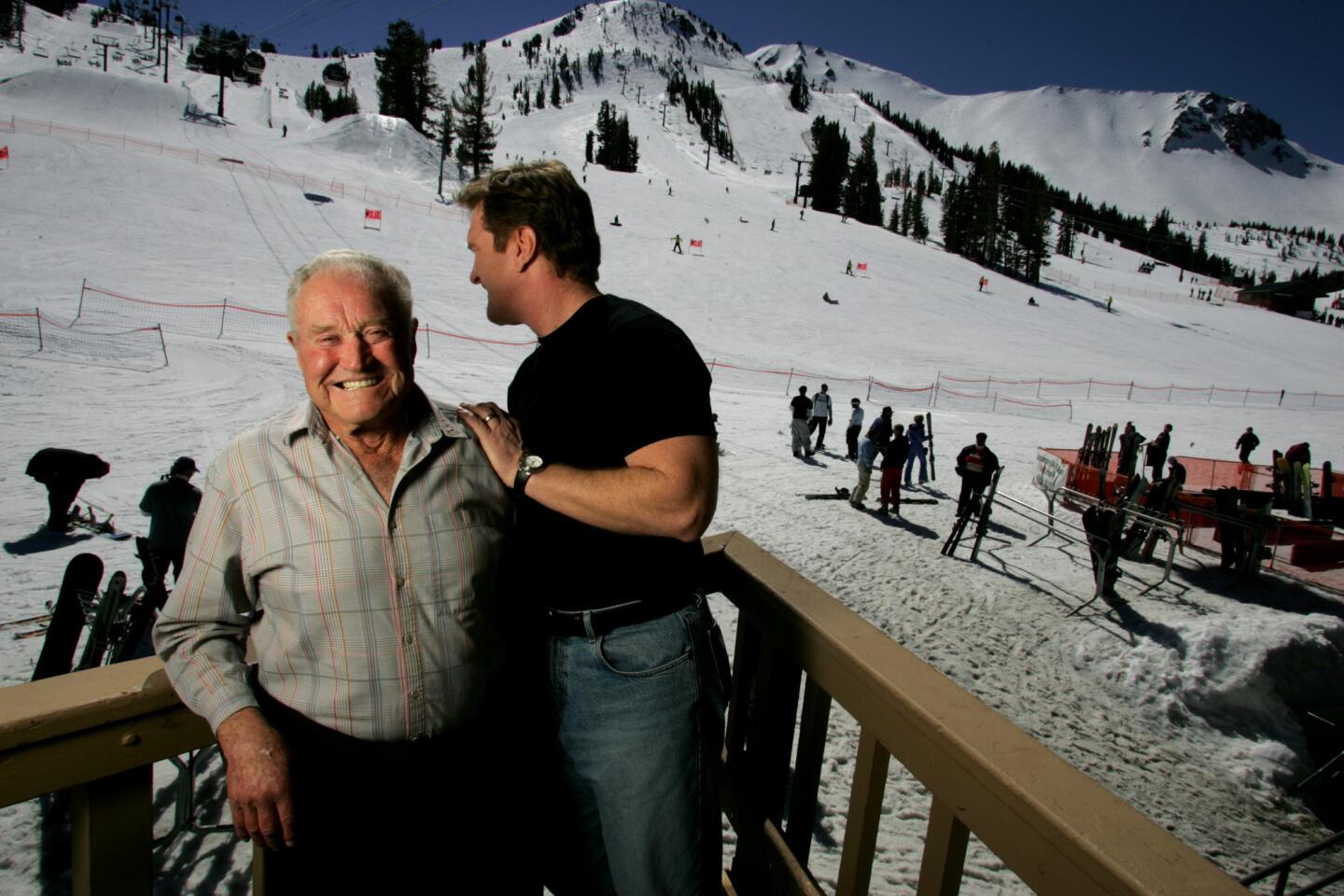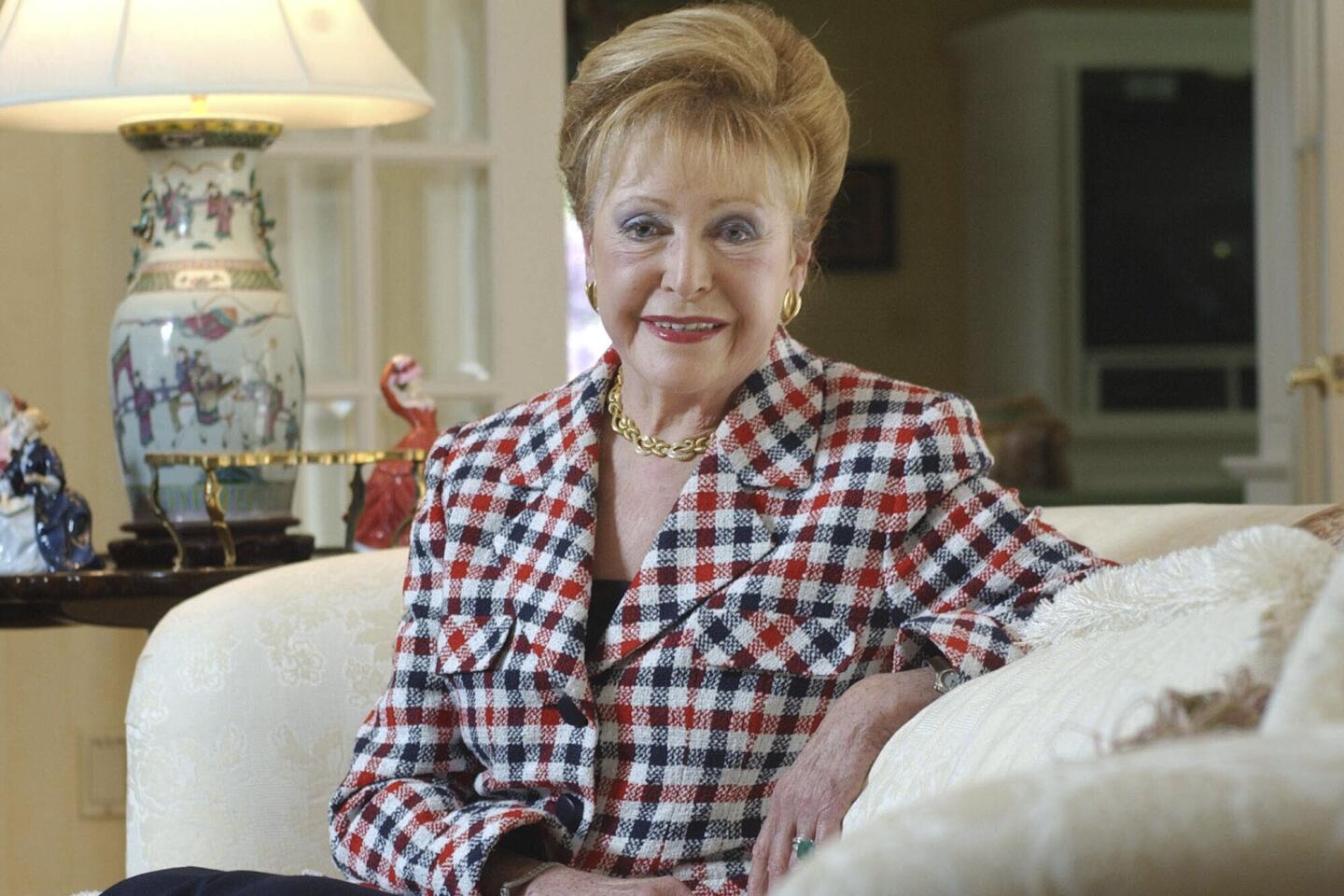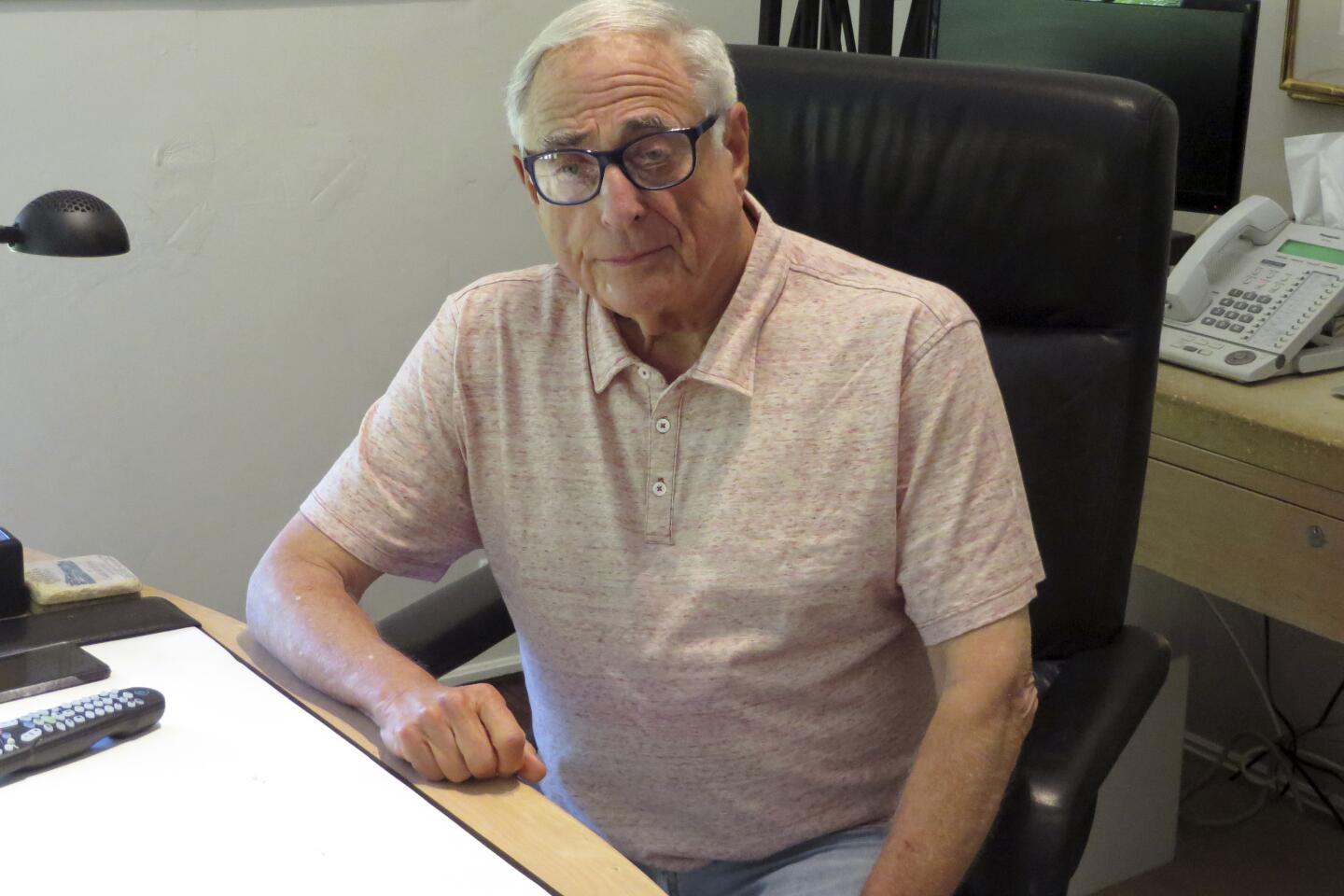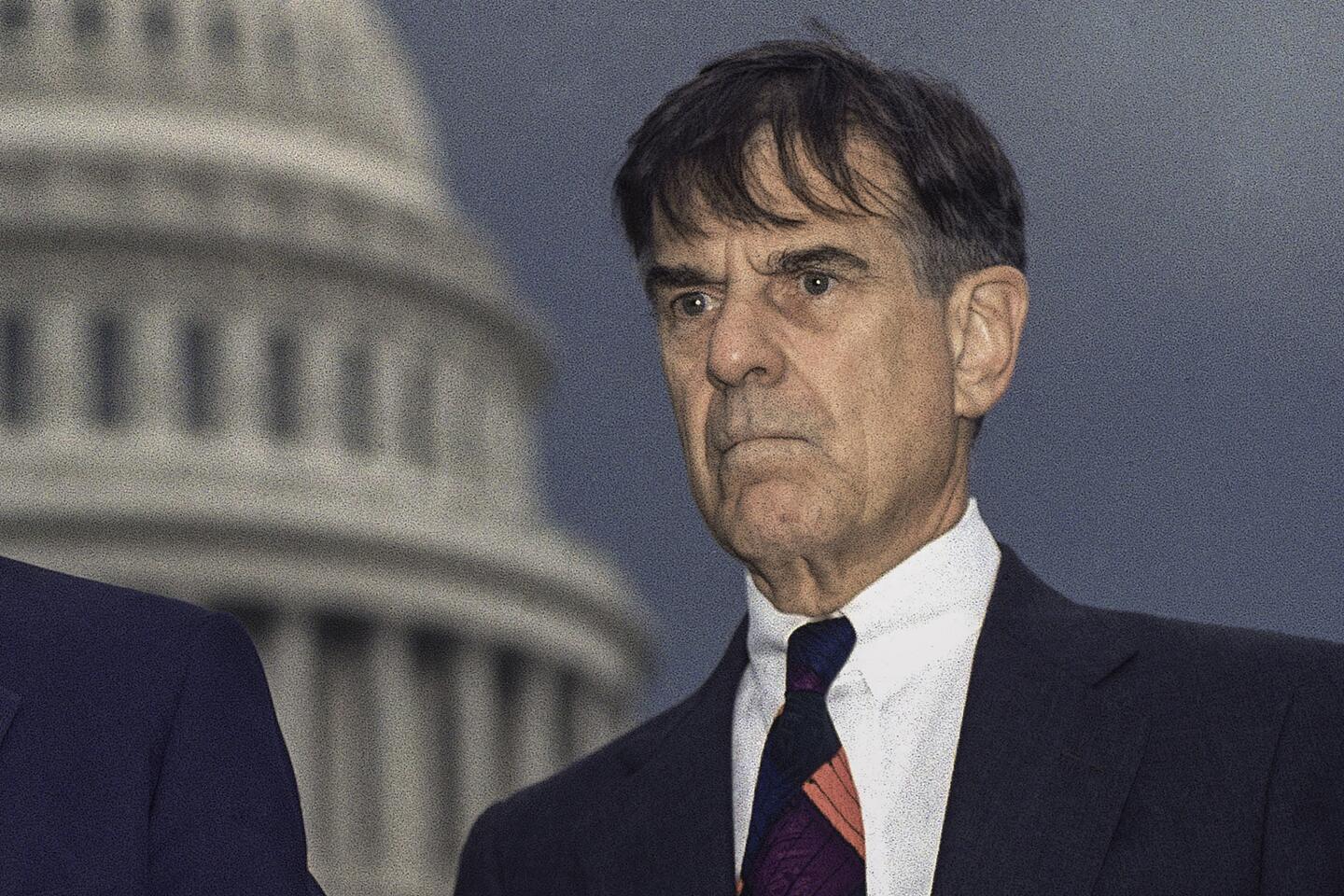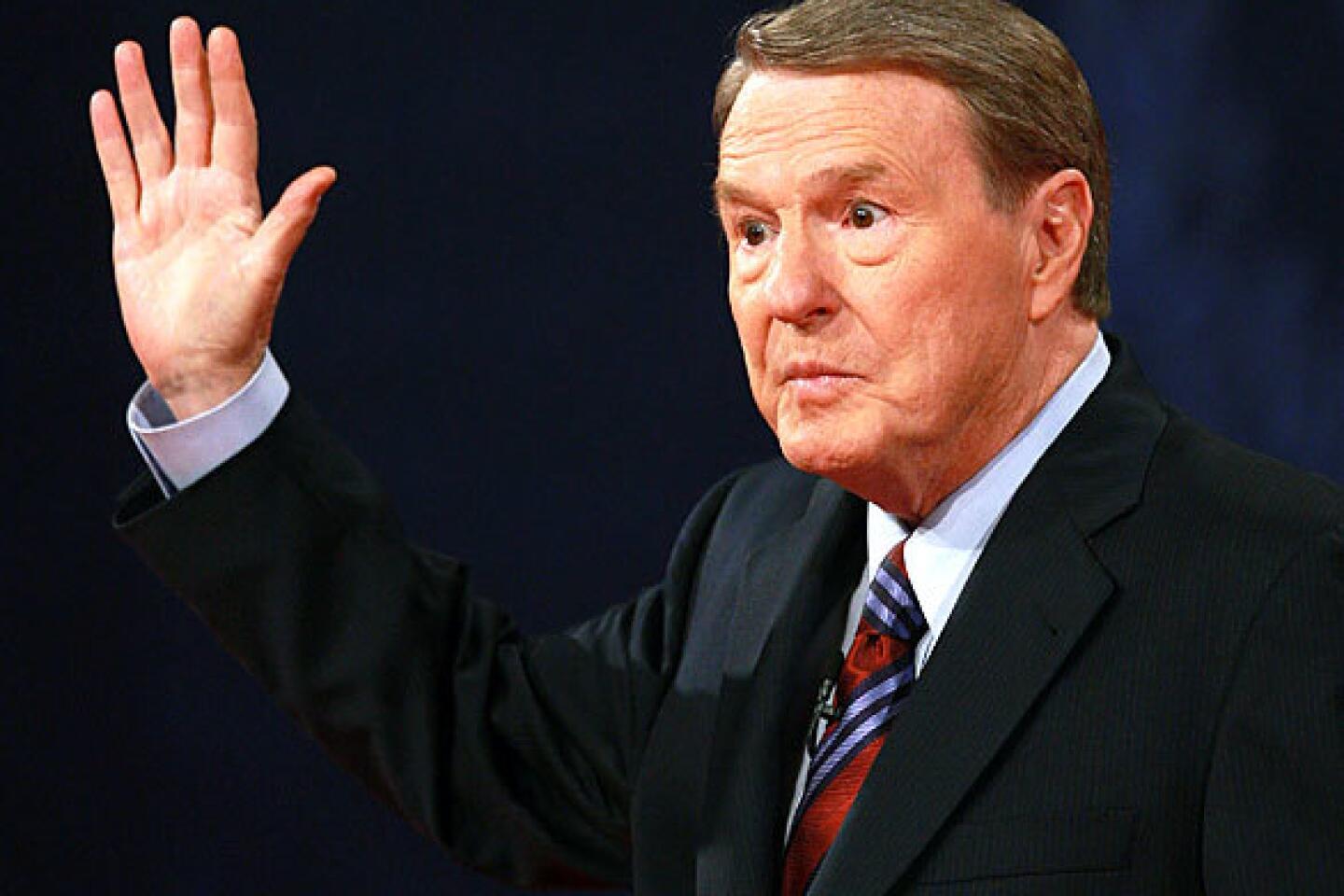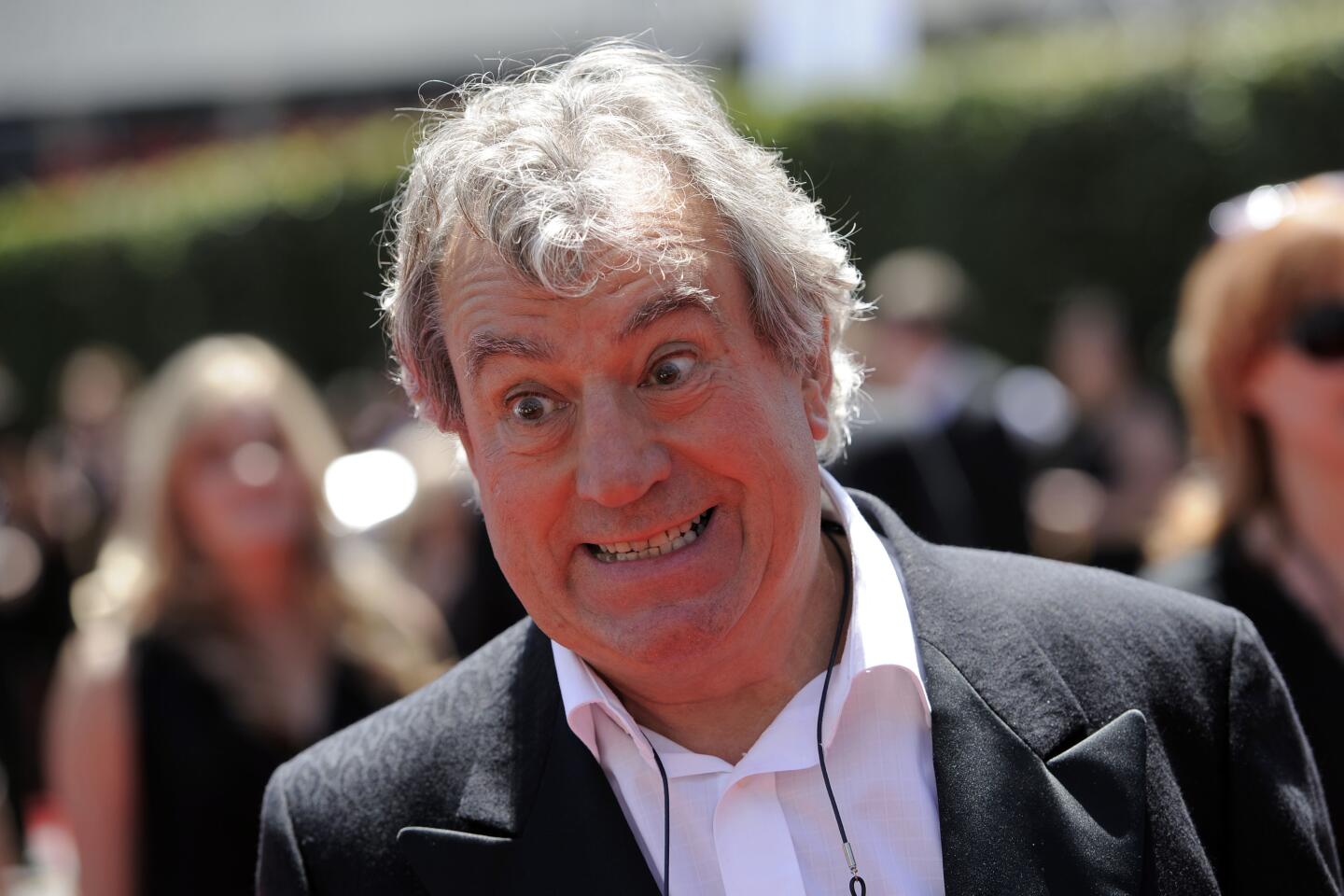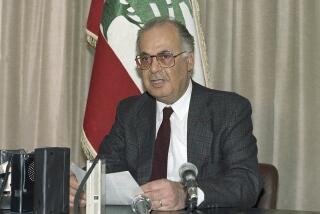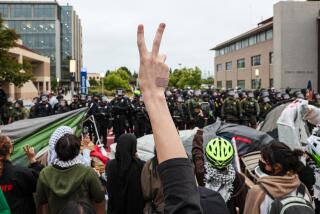Hosni Mubarak, Egypt’s calculating autocrat, dies at 91
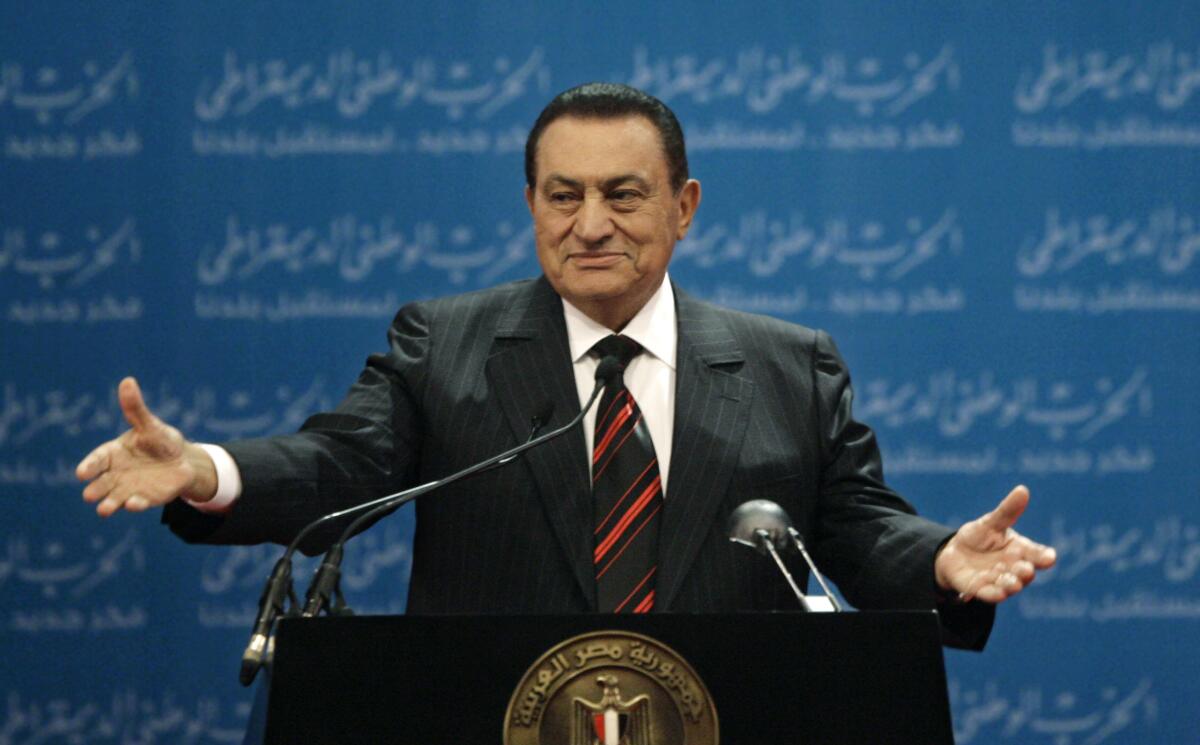
- Share via
CAIRO — Former Egyptian President Hosni Mubarak, a cautious head of state who for decades kept a cold peace with Israel and crushed political dissent at home until a 2011 protest movement overwhelmed his security forces and drove him from power in the early days of the Arab Spring, died on Tuesday, according to Egypt state TV. He was 91.
His health sharply deteriorated after he was handed a life sentence in 2012 for failing to stop police from killing hundreds of people in the uprising that ended his rule. He was acquitted five years later, but by then Mubarak was a diminished, almost spectral figure, waving from the window of a military hospital along the Nile or lying on a stretcher, his gaunt face hidden by sunglasses.
Modern Egypt’s longest-serving leader, Mubarak was pragmatic but rarely imaginative as he struggled to outflank growing resentment at home and preserve the country’s slipping stature in a volatile region. He often seemed more intent on consolidating power than on advancing a political ideology, revealing an authoritarian streak that drew reproach from Washington, his biggest ally.
Pent-up public anger over years of repression became his undoing in January 2011 when protests swept across Cairo and other cities. Organized by youth movements, the 18 days of demonstrations engulfed Egyptians from all social and economic classes. Mubarak resorted to a desperate mix of concessions and coercion until the army, fearful of wider unrest and an economy in turmoil, forced him to step down.
It was a humiliating defeat for a calculating autocrat who for years entrusted Egypt’s fate only to himself. The cinematic-like toppling of Mubarak’s government and his subsequent appearance — with his sons Gamal and Alaa — in a defendants cage in a Cairo courtroom became a rallying cry for change throughout North Africa and the Middle East and an inspiration for a new generation of Arabs demanding better lives. Those protests, however, led to war in Syria and Yemen, factional fighting in Libya and a military crackdown in Egypt that toppled Mubarak’s successor, Mohamed Morsi, and his Muslim Brotherhood.
During a presidency that spanned nearly 30 years, Mubarak survived assassination attempts and lived in the shadow of his more flamboyant predecessors: Gamal Abdel Nasser, a charismatic pan-Arabist, and Anwar Sadat, who ignored Arab objections and made peace with Israel.
With his air force background, Mubarak straddled Egypt’s rigid military elite and an emerging corporate culture, emphasizing the need for foreign investment and national development, yet doing little to curtail the cronyism and inefficiency that led to a state increasingly unable to meet the needs of its 81 million people, be they students, bakers, fishermen or weavers.
His tenure was marked by convulsions throughout the Middle East: Intifadas roiled Israel and the Palestinian territories; Lebanon imploded into civil bloodshed; the U.S. led two wars against Iraq’s Saddam Hussein; Iran fomented militant Shiite Islam across the region; and global terrorism complicated the divide between East and West.
“His biggest accomplishment may have been protecting the stability of the nation,” said Robert Springborg, author of the biography “Mubarak’s Egypt: Fragmentation of the Political Order.”
“You had two [Persian] Gulf wars, Palestinian uprisings and a more active Iran, yet Egypt was not sucked into anything,” he said. “None of its sons were dying in wars.”
Sworn in as president Oct. 14, 1981, eight days after Sadat was assassinated by Islamic extremists, the former Soviet-trained air force commander moved quickly to stem attacks in the Arab media over his predecessor’s accord with Israel. Egypt, which receives about $1.3 billion annually in military aid from the U.S., was a partner in Washington’s attempts to end the Palestinian-Israeli conflict, but Mubarak feared losing legitimacy in the Arab world if he appeared too close to Israel. He visited that country only once, for the funeral of assassinated Prime Minister Yitzhak Rabin.
“He wanted to convey the message that he did not want to be tainted,” said Samer Soliman, associate professor of political economy at the American University in Cairo.
Mubarak also attempted to heal, with some success, the domestic wounds of Sadat’s final years. But although Mubarak initially freed hundreds of political prisoners and loosened restrictions on opposition groups, and spent more time on domestic affairs, he bristled at political openness and often abandoned democratic principles. His regime was marked by the imprisonment of thousands of journalists, activists and Islamists belonging to the opposition group the Muslim Brotherhood.
At times criticizing U.S. actions in the Middle East, Mubarak remained a strategic ally to five American presidents. He provided crucial support to the U.S.-led coalition in the 1991 Persian Gulf War. Egypt contributed 38,500 soldiers to that campaign against Iraq and granted the U.S. military overflight rights and use of the Suez Canal — gestures that resulted in Western nations halving Cairo’s debts.
Regional politics were more volatile more than a decade later, however, when the U.S. again prepared for war against Baghdad. This time, Mubarak, reacting to Arab political pressure, opposed the invasion and prevented his army from joining the American-led forces that toppled Hussein. But in a televised address as war neared, Mubarak blamed Iraq for inciting hostilities. He kept the Suez Canal open to the U.S. and allied warships.
It was Sadat’s pact with Israel that entangled Mubarak in sensitive Middle East passions. As part of the 1979 peace treaty that was negotiated at Camp David under the guidance of President Carter, Israel handed over the Sinai peninsula to Egypt in 1982. It was the only major tract of Arab territory seized by Israel during the 1967 Middle East War that was returned, and the withdrawal raised hopes of warmer relations between the two nations.
However, six weeks later, Israel invaded Lebanon, and relations between Israel and Egypt began to deteriorate. Mubarak withdrew his ambassador to Israel that September after the massacre of Palestinians in two Beirut refugee camps by Israel’s Lebanese Christian allies. The post was left vacant for years.
Even that move was not marked by the histrionics and lengthy speeches that Sadat favored.
“My conception is that everything should be done quietly and not in a dramatic way,” Mubarak said in evaluating his first year in office. “Psychologically, the people are more relaxed than before.”
Not a man who openly craved power — he told an interviewer in 1999 that he had hoped Sadat would make him the ambassador to London or Paris — Mubarak at first earned a degree of respect if not adoration from Egyptians. His style was so much more low-key than that of Sadat, so much less driven than that of Nasser, that by contrast he seemed plodding. Yet he was skilled at destabilizing political opponents and in creating an aura through much of his tenure that Egypt was moving ahead even as it struggled.
Mubarak’s government pushed economic reforms, privatized industries, reduced debt and improved the country’s infrastructure; the nation’s gross domestic product jumped from $26 billion to $184 billion between 1980 and 1999. Between 2005 and 2010, the country’s economy grew an impressive 4% to 7% a year.
Such figures benefited the wealthy and members of the ruling National Democratic Party but did not lift the nation out of desperation. More than 40% of all Egyptians live in poverty, earning less than $2 a day. Tens of thousands of college graduates each year face the prospect of no job. Healthcare, schools and other services deteriorated, leading to disenchantment and accusations that Mubarak had grown aloof to the poor and the middle class, even as he groomed his son Gamal, a Western-educated venture capitalist, to succeed him.
“The real socioeconomic problems of Egypt, be it poverty or unemployment, be it unequal or imbalanced distribution of wealth … reached unprecedented high levels under Mubarak,” said Amr Hamzawy, an Egyptian political analyst with the Carnegie Endowment.
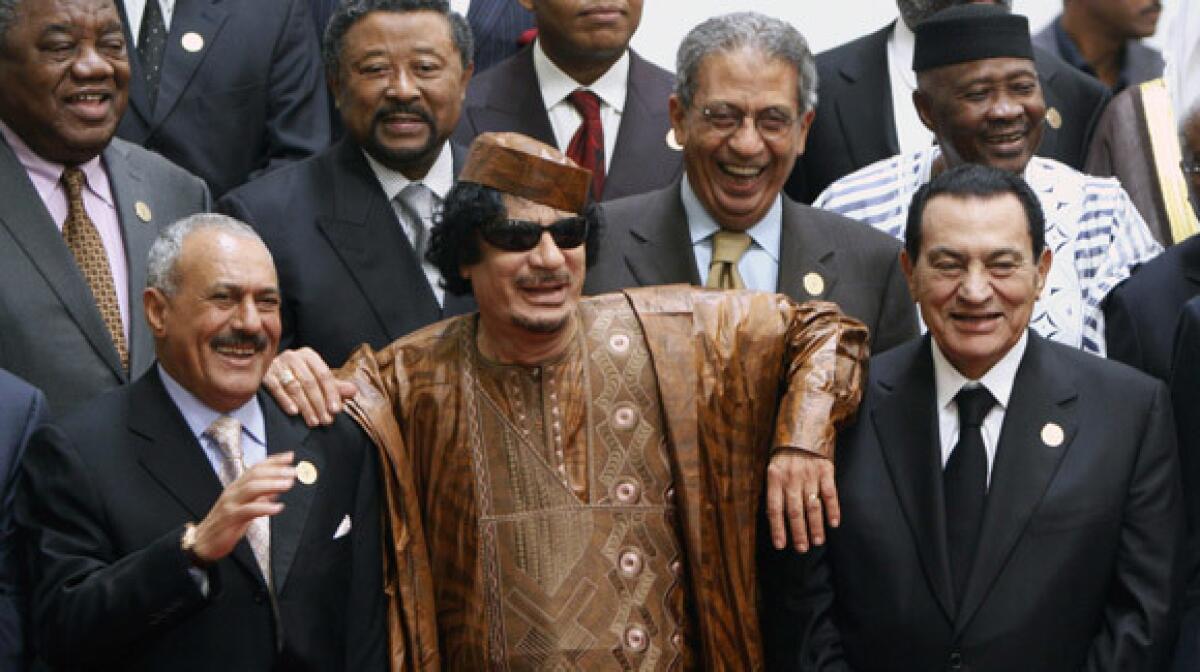
The Mubarak regime’s authoritarian bent drew rebuke from human rights groups. In 2003, the Bush administration urged Mubarak to ease restrictions on the media and opposition parties; two years later, Mubarak pressed parliament to allow multiparty presidential elections. The reforms were limited, however, and no other candidate stood a chance. But this relative openness backfired on Mubarak and the U.S. months later when the Muslim Brotherhood, which supports a government based on the Quran, won 88 of 444 contested seats in parliament.
The Egyptian president responded by arresting hundreds of Muslim Brotherhood members and restricted the group’s participation in future elections. The struggle underscored the sweeping police powers of Mubarak’s Egypt, which had become more pronounced in the 1990s following terrorist attacks on tourist sites.
Mubarak skillfully undercut his main political opponent by painting the Muslim Brotherhood as in league with Islamic militants. The struggle between the two was illustrative of the larger battle between popular Islamic parties and old-guard Middle East regimes viewed as corrupt and unable to move beyond the politics of the Cold War.
In November 2010, Mubarak’s ruling party was widely condemned for rigging another election after sweeping parliament. Outrage over the results coincided with a movement of young middle-class professionals that used Facebook and nonviolent protest tactics to stage a demonstration on Jan. 25, 2011. In the ensuing days, hundreds of thousands of protesters converged in Cairo’s Tahrir Square, which became the epicenter of the country’s revolt.
Riot police failed to drive back the crowds, as did thugs dispatched by the ruling party to attack demonstrators. Mubarak, appearing as if a tone-deaf father, failed in three nationally televised speeches to calm the furor against him. He became as defiant as the protesters in a drama that riveted the word until Feb. 11, when, under pressure from an army that for decades had been loyal to him, Mubarak resigned and flew from Cairo to his home in the Red Sea resort of Sharm El Sheik. He was later arrested and charged with complicity to commit murder, and, along with his sons, corruption and embezzlement.
Mubarak was born May 4, 1928, in the northern province of Minufiya, the son of a low-ranking civil servant. He graduated from the military academy in 1949 as a lieutenant and from the air force academy in 1952. He spent much of the period from 1961 to 1963 in the Soviet Union, training on Tupolev Tu-16 heavy bombers as well as other aircraft, and moved up rapidly through the ranks after returning to Egypt. In 1969, Nasser made him air force chief of staff.
Six years later, Sadat — who became president when Nasser died of a heart attack in 1970 — chose Mubarak to be his vice president. It was a controversial choice because Mubarak ranked only third in the military hierarchy, but Sadat apparently saw in the man 10 years his junior a leader with no political debts who represented the younger generation of officers.
“I need a vice president who will share with me state secrets at all levels,” Mubarak once quoted Sadat as saying. “No one can foresee the future, and state secrets must not be known by one person alone.”
Mubarak’s air force had performed well in a 1973 war against Israel, helping to give Egypt a psychological boost. And as the No. 2 man, Mubarak performed in a manner becoming a professional military man: He was a hard-working loyalist who stayed in the background and let his boss take the credit.
Perhaps because of these attributes, Sadat gave him responsibilities unusual for a vice president in the Arab world. Mubarak accompanied the president to summits on several continents, tried to mediate an end to a war in the Western Sahara territory and led a 1976 delegation to meet with Mao Tse-tung in China after Egypt abrogated its friendship treaty with the Soviet Union.
After Sadat’s visit to Jerusalem in 1977, Mubarak toured 10 Arab capitals to explain Egypt’s position on peace with Israel. He also visited Europe and Iran after the Camp David peace conference the next year and staunchly supported the formal peace treaty in 1979.
Mubarak, dressed in uniform, was seated at Sadat’s right on Oct. 6, 1981, when the president was gunned down while reviewing a military parade. Mubarak, who was slightly wounded, was asked later if he ever thought about that brush with death.
“I lived my life as a pilot,” he said. “I faced so many dangers. ... I met so many terrible events in the air. I think for me it is not more than what I met there.”
Mubarak escaped a 1995 assassination attempt in Ethiopia. He blamed Islamic extremists — who, as a group, presented the gravest threat to his presidency and perhaps to Egypt’s stability.
The militants’ random attacks on foreigners and Egyptians, particularly Christian Copts, in the mid-1990s brought a brutal government response. Egypt held an estimated 25,000 political prisoners in 2002, most of them religious extremists, but had virtually wiped out the network of internal extremists.
Often criticized by human rights activists and Egyptians alike for largely ignoring democratic reform and for not abolishing the emergency law imposed after Sadat’s death, Mubarak, whose police intimidated voters at many polling stations, was reelected in 2005 to his fifth consecutive term.
Information on survivors was not immediately available.
Former Times staff writer David Lamb and special correspondent Noha El-Hennawy contributed to this report.
More to Read
Start your day right
Sign up for Essential California for the L.A. Times biggest news, features and recommendations in your inbox six days a week.
You may occasionally receive promotional content from the Los Angeles Times.
